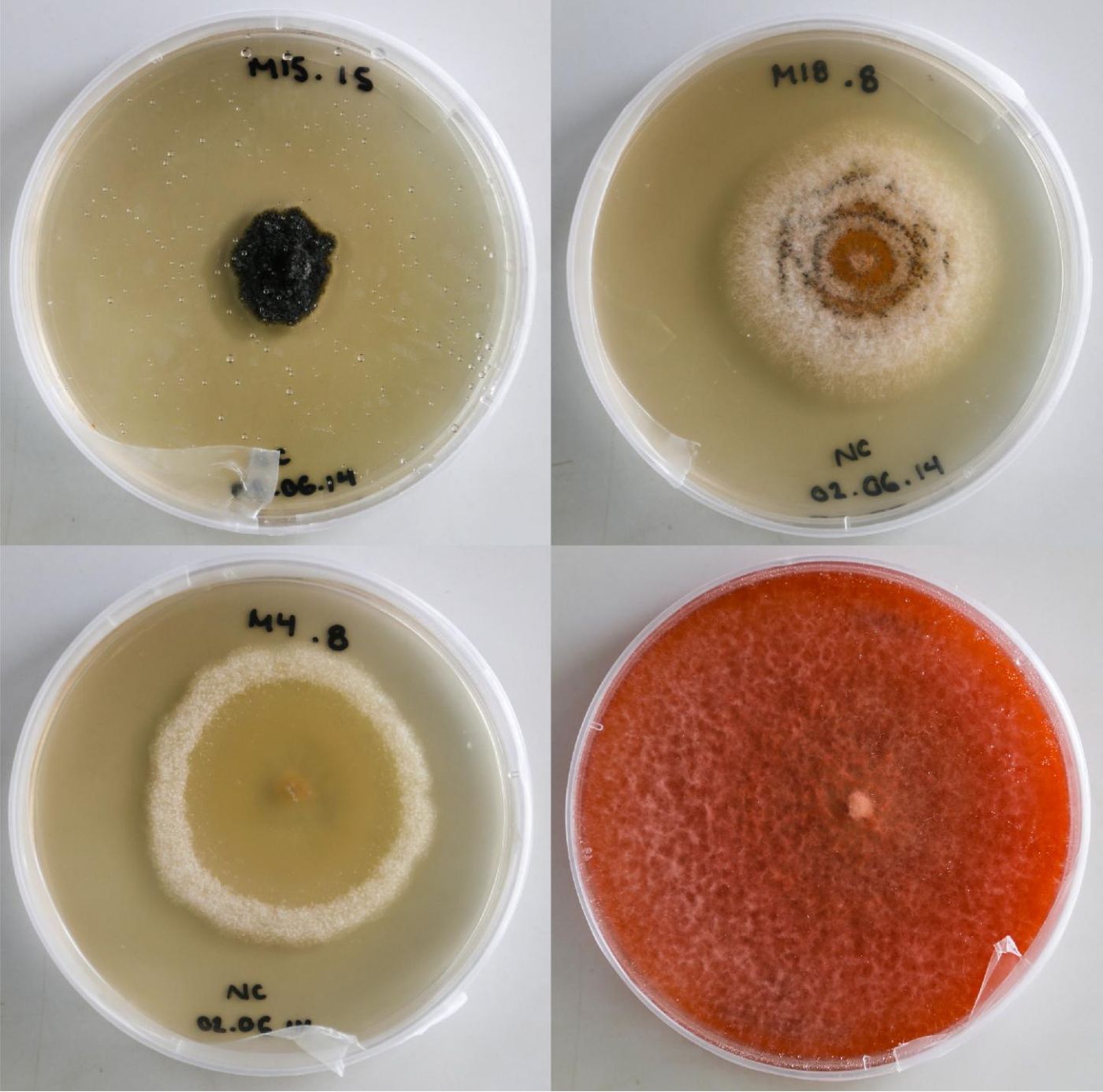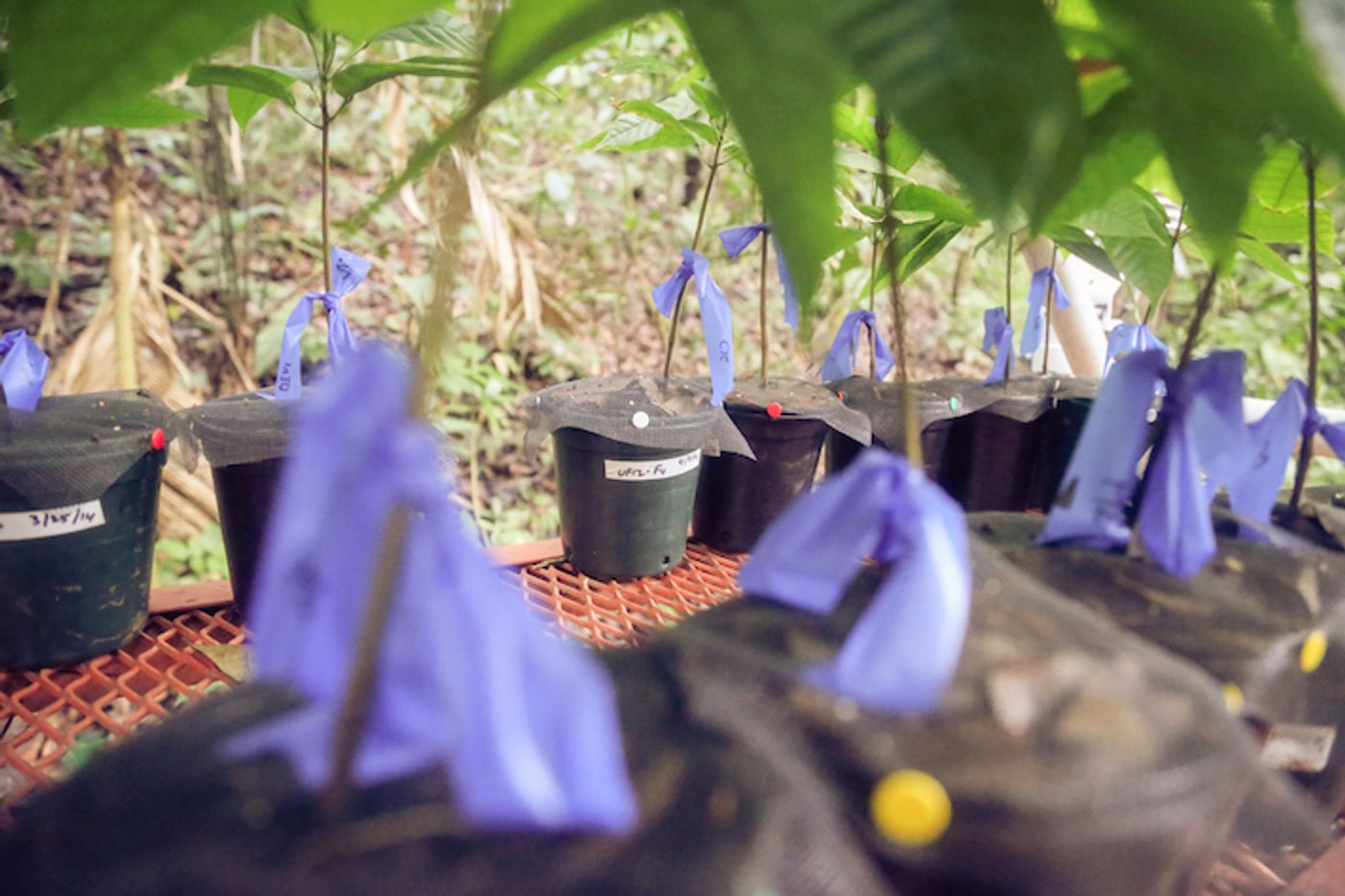Microbes act to Protect our Chocolate Supply
Chocolate, derived from cacao plants, is loved by people the world over. Microbes have been found to be critical to the health of these plants, and may help agriculture in the future by giving cacao plants protection against disease. Researchers found that when baby cacao plants are exposed to the microbes of healthy adult cacao, the risk of infection by Phytopthora palmivora is cut in half. The work has been reported in Proceedings of the Royal Society B, by scientists at the Smithsonian Tropical Research Institute (STRI) in Panama.
This transmission of protection is not unlike that seen in other species, like humans. “When human babies pass through the birth canal, their bodies pick up a suite of bacteria and fungi from their mother. These microbes strengthen their immune system and make the baby healthier," explained lead author Natalie Christian, a doctoral candidate at the University of Indiana. "We showed that an analogous process happens in plants: adult cacao trees also pass along protective microbes to baby cacao plants."
STRI scientists have shown how microbes that are applied to leaves can help protect plants. For example, the fungus Colletotrichum tropicale acts to shield plants from insects and pathogens that consume them. The investigators have demonstrated that microorganisms stimulate a plant to defend itself, and that these microbes can affect gene expression in their hosts.
These researchers have been building on this work for awhile; a recent Science publication by Joe LaManna of the Washington University in St. Louis and colleagues has shown it’s not good for close plant to be physically close. There are stronger negative interactions between plant relatives in the tropics, a potential explanation for the diversity of tropical forests - plant relatives have to be spaced out, leaving lots of gaps for other types of plants.
"Where you get a build-up of any given species, you get a build-up of the bad guys, their enemies," explained co-author Allen Herre, STRI staff scientist. "A mother tree can infect her babies with pathogens that can kill them if they are too close by. In this most recent study we show that parents can also have a positive effect by supplying babies with good microbiota."
The scientists used baby cacao plants grown in a sterile environment through a series of different procedures. Some were exposed to healthy cacao leaves, others to forest floor leaves, and others were not exposed to any leaves. When these plants were then taken to the forest where fungi could interact with them naturally. Finally, the plants were exposed to a pathogen called Phytopthora palmivora, which translates as "plant destroyer" and accounts for around 15 percent of worldwide cacao production losses.
After three weeks, it was found that plants treated with healthy cacao leaves had significantly reduced damage compared with unexposed plants. Compared with forest floor leaves, the healthy cacao leaf treatment cut destruction in half. The researchers followed up to see how the microbes inside of the leaves were impacting the situation.
"We discovered both by culturing the microbes from the leaves and also by directly sequencing fungal DNA from plant tissue, that one of the most common fungi on the cacao seedlings was their protector, Colletotricum tropicale. And not only that, but it was also much more common on the leaves of young plants grown with leaf litter from healthy cacao adults," said Christian. "What this means is that C. tropicale from leaf litter from adult trees is able to quickly get into young leaves and crowd out other microbes, including pathogens, thus keeping them from colonizing."
"Not only did this show us that starting seedlings out surrounded by leaves from healthy adults may vastly improve their health -- a result potentially very important to the cacao industry -- for the first time, we are beginning to understand how microbial communities assemble on leaves of cacao and other species in nature and what may influence their ability to protect plants," concluded Herre.
You can find out more about STRI Panama from the video above, and more about Phytophthora palmivora and cacao plants from the following video.
Sources: AAAS/Eurekalert! via STRI, Science, Proceedings of the Royal Society B










